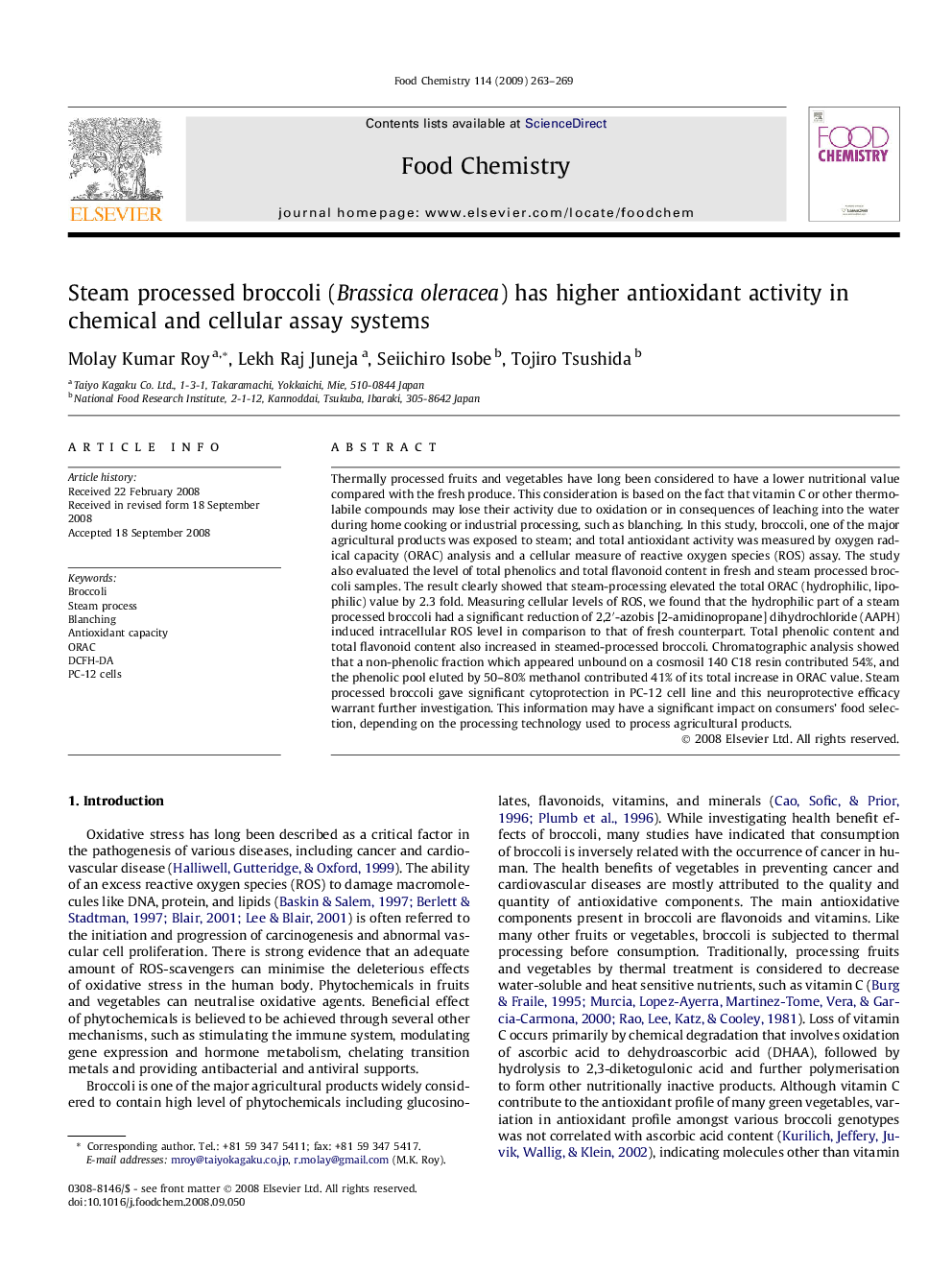| Article ID | Journal | Published Year | Pages | File Type |
|---|---|---|---|---|
| 1188759 | Food Chemistry | 2009 | 7 Pages |
Thermally processed fruits and vegetables have long been considered to have a lower nutritional value compared with the fresh produce. This consideration is based on the fact that vitamin C or other thermolabile compounds may lose their activity due to oxidation or in consequences of leaching into the water during home cooking or industrial processing, such as blanching. In this study, broccoli, one of the major agricultural products was exposed to steam; and total antioxidant activity was measured by oxygen radical capacity (ORAC) analysis and a cellular measure of reactive oxygen species (ROS) assay. The study also evaluated the level of total phenolics and total flavonoid content in fresh and steam processed broccoli samples. The result clearly showed that steam-processing elevated the total ORAC (hydrophilic, lipophilic) value by 2.3 fold. Measuring cellular levels of ROS, we found that the hydrophilic part of a steam processed broccoli had a significant reduction of 2,2′-azobis [2-amidinopropane] dihydrochloride (AAPH) induced intracellular ROS level in comparison to that of fresh counterpart. Total phenolic content and total flavonoid content also increased in steamed-processed broccoli. Chromatographic analysis showed that a non-phenolic fraction which appeared unbound on a cosmosil 140 C18 resin contributed 54%, and the phenolic pool eluted by 50–80% methanol contributed 41% of its total increase in ORAC value. Steam processed broccoli gave significant cytoprotection in PC-12 cell line and this neuroprotective efficacy warrant further investigation. This information may have a significant impact on consumers’ food selection, depending on the processing technology used to process agricultural products.
